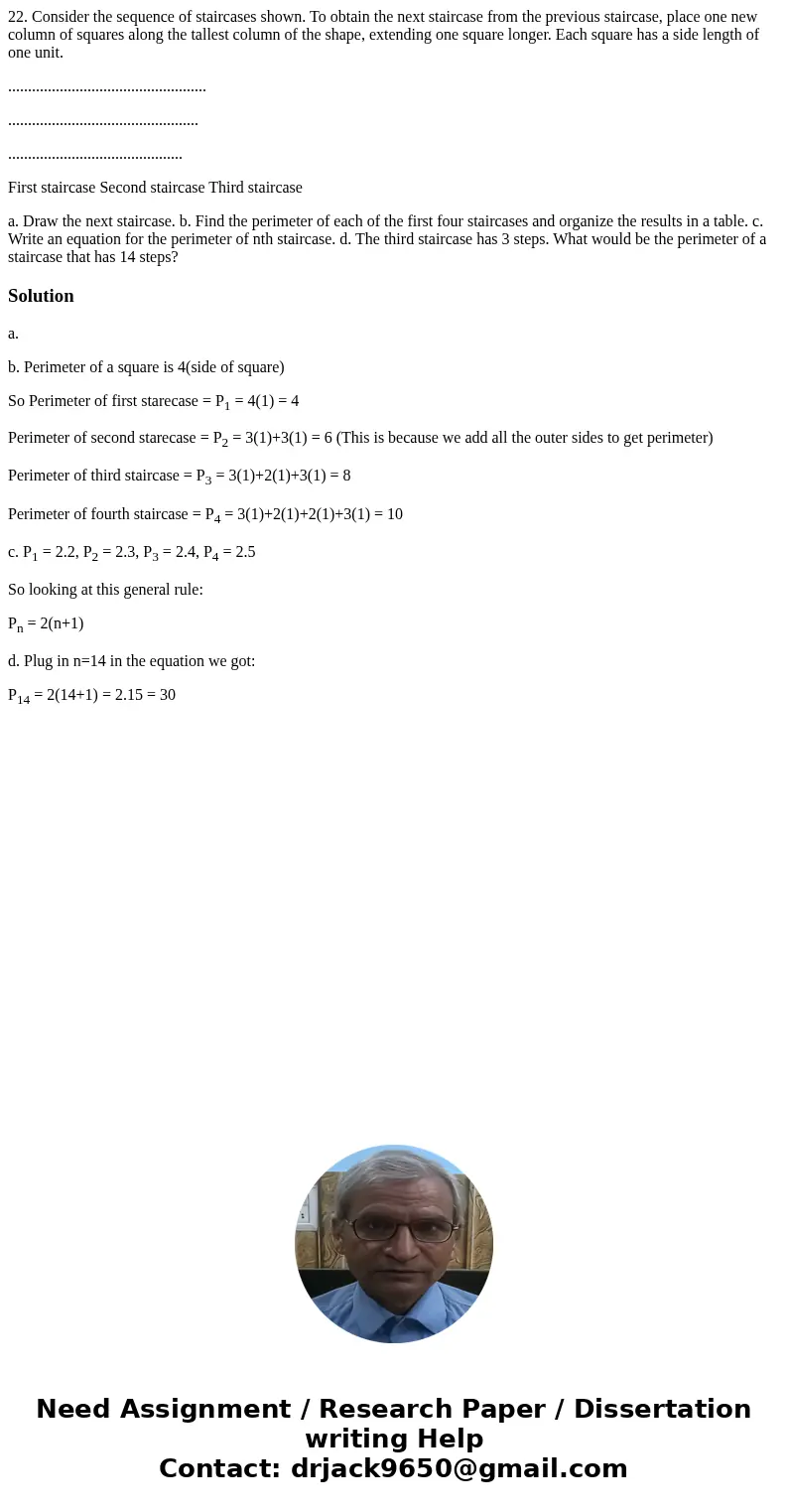22 Consider the sequence of staircases shown To obtain the n
22. Consider the sequence of staircases shown. To obtain the next staircase from the previous staircase, place one new column of squares along the tallest column of the shape, extending one square longer. Each square has a side length of one unit.
..................................................
................................................
............................................
First staircase Second staircase Third staircase
a. Draw the next staircase. b. Find the perimeter of each of the first four staircases and organize the results in a table. c. Write an equation for the perimeter of nth staircase. d. The third staircase has 3 steps. What would be the perimeter of a staircase that has 14 steps?
Solution
a.
b. Perimeter of a square is 4(side of square)
So Perimeter of first starecase = P1 = 4(1) = 4
Perimeter of second starecase = P2 = 3(1)+3(1) = 6 (This is because we add all the outer sides to get perimeter)
Perimeter of third staircase = P3 = 3(1)+2(1)+3(1) = 8
Perimeter of fourth staircase = P4 = 3(1)+2(1)+2(1)+3(1) = 10
c. P1 = 2.2, P2 = 2.3, P3 = 2.4, P4 = 2.5
So looking at this general rule:
Pn = 2(n+1)
d. Plug in n=14 in the equation we got:
P14 = 2(14+1) = 2.15 = 30

 Homework Sourse
Homework Sourse